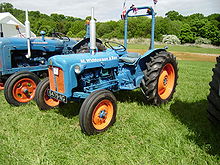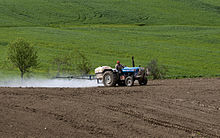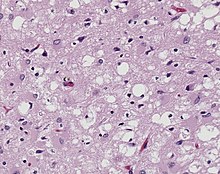User:Connieoh13/sandbox
 | This is a user sandbox of Connieoh13. You can use it for testing or practicing edits. This is not the sandbox where you should draft your assigned article for a dashboard.wikiedu.org course. To find the right sandbox for your assignment, visit your Dashboard course page and follow the Sandbox Draft link for your assigned article in the My Articles section. |
Be bold in Wikipedia.
Agricultural Safety and Health
[edit]Agricultural safety and health is an aspect of occupational safety and health in the agricultural workplace. It specifically addresses the health and safety of farmers, farm workers, and their families.[1]

Contrary to perceived belief and notions of work in the agricultural landscape, agriculture is one of the most dangerous industries in the US, with a variety of factors causing injuries and death in the workplace. [2] Many of the injuries, long-term or short, prevalent in the occupation are hearing loss, musculoskeletal disorders, respiratory diseases, poisoning from pesticides and chemicals, reproductive issues, and many other ailments.[3] These injuries are caused mainly by loud noises from machinery, stress from transporting heavy objects, gases and fumes like methane and from chemicals, and other various causes, respectively.[2]
Details
[edit]A major cause of injury and deaths in the workplace, though, comes from farm machinery/vehicles, specifically tractor overturns in a study between the years 1992 to 2009.[4] While the industry produces a necessary product needed by everyone, the industry is diminishing in prevalence and only recently, has been viewed as an occupation needed of further knowledge and development of safety measures and standards, an issue the National Institute for Occupational Safety and Health (NIOSH) has stressed in recent times.[3] The publishing of a report, Agriculture at risk, at a national conference held at Ohio State University and University of Ohio, stirred the initiation of research, implementations, and funding by NIOSH, regarding agricultural health issues, illnesses, and safety measures in the workplace.[3]
The demographics behind agricultural work has been changing throughout the years, with the rise of more private, family owned farm industries, as well as the increasing prevalence of young farm workers.[2] Young farm workers are at a greater risk than older or adult farm workers of injury, but this issue is not addressed to the full extent due to nonexistence in the statistics of the Bureau of Labor, which only regards those of age 16 and older.[2] Increase of young farm workers could be attributed to the rising trend of "return to farming". Not only young workers, but women farm workers are increasing at a steady rate as the lead operators of the farm industries.[2]
While the exact timeline of the history behind agricultural occupational safety and health is not set, there are major dates, through the years, that led the way of increasing the importance of agricultural safety measures. The initial steps in enacting laws to improve agricultural safety measures occurred in 1878 in the Threshing Machines Act.[5] Later on in the timeline, the Agriculture Poisonous Substances Act and Agriculture Safety, Health, and Welfare Provisions Act were enacted in 1952 and 1956, respectively, to address regulations of the use of chemicals as well as stressing safety and sanitation measures, especially for young children farm workers.[5] The most recent event has occurred in 2008 in which the Pesticide Safety Directorate (PSD) is now under the Health and Safety Executive (HSE), with the Department for Environment, Food, and Rural Areas (DEFRA) being the previous department to oversee the PSD.[5]
Illnesses/Injuries from Agricultural Work
[edit]Illnesses and injuries regarding agriculture can vary from one farm to another, according to which industry or sector the farm specializes in.[2] This becomes more apparent as the environment of each farm is different according to these specialties, which in turn poses different areas of risk factors leading to injuries and ailments.[2] In all though, there are similarities in the risk factors and illnesses that agricultural workers face on a day to day basis as in injuries from machinery, large animals, pesticides, respiratory illness-causing factors, musculoskeletal disorders, hearing loss, reproductive issues regarding women, and many more.[2] The most common illnesses seem to be musculoskeletal disorders, pesticide poisoning, and respiratory diseases.
Musculoskeletal Disorders
[edit]Musculoskeletal disorders can arise from a number of factors, but the main causes seem to be from livestock and large machinery/equipment. Machinery are usually devoid of safety measures and pose a greater threat, since agricultural workers fix and operate these machines themselves for utilization in the fields.[2] These machines may also be run while repairs are under way, causing even more instances of potential injuries.[2] Bending, twisting, and stretching motions that are apparent when operating these equipment causes much back and neck strain, leading to more exacerbated conditions over time.[2] This is in regards to not only agricultural workers operating machinery, but also workers in the fields, who experience pain and strains in the wrists, back, hips, and knees.[3] Livestock can also pose a threat to the musculoskeletal systems of the body due to their large weight and varied behavior, possibly leading to kicking and unintentional blows by the animal to the agricultural worker.[2] No matter the cause, it is apparent that musculoskeletal disorders are common in the agricultural industry and need to be addressed to treat the ailment as quickly as possible.[3] In a study regarding agricultural work safety climate of approximately 300 North Carolina migrant farmworkers, 40% had musculoskeletal ailments and many reported numerous days working while ill.[6] Many underestimated the safety measures they were able to obtain and thought that risks were inevitable due to the risks involved in agriculture.[6] Musculoskeletal disorders are categorized into acute or first time injuries and chronic long-term ailments according to many acute injuries.[7]
Pesticide Poisoning
[edit]
Chemical and pesticide use causes many health ailments as in chemical or pesticide poisoning and reproductive issues in women.[3] Some common chemicals used in agriculture are bipyridyls, organophosphates, and carbamates.[3] Exposure to pesticides can occur through not just the process of making pesticides, but also in other agricultural tasks like harvesting crop or irrigating fields.[8] Part of the problem arises in the lack of more strict safety measures as well as utilization of personal protective equipment, but the use of pesticides requires care in itself of set safety measures.[2] The United States' use of pesticides resides heavily in agriculture, with 75% being used in this industry.[8] In a study by the California Department of Pesticide Regulation and the SENSOR- Pesticides program, regarding pesticide poisoning incidence rates out of 3,271 cases, 402 individuals had medium severity illnesses from pesticide exposure with high severity cases being rare and lower severity being more common.[8] From this study, the pesticides that were deemed to cause most cases of diseases were cholinesterase, pyrethroids, inorganic compounds, and dithiocarbamates.[8] Insecticides, specifically cholinesterase inhibitors (N-methyl carbamates and organophosphates) cause a majority of the illnesses in 54% of the individuals in the case.[8] Some of the more common symptoms seen in pesticide poisoning were nervous system impairments, headaches, gastrointestinal issues, respiratory impairments, skin impairments, inflammations, and many more.[8]
Respiratory Diseases
[edit]Recently, agricultural respiratory diseases have been rising from development of animal production facilities causing toxic fumes to permeate the area.[3] Much of the irritants involved in causing these diseases are ammonia, organic dust, hydrogen sulfide, bacterial microorganisms, mold, and various hydrocarbons.[3]
Youth in Agricultural Operations
[edit]Incidents that occur involving farm machinery are a risk to children under the age of 13 and those who are employed in any way must be properly trained by their employer in order to use the machinery. According to the law, children under 13 cannot drive any farm machinery, and children under 16 cannot operate machinery that is equipped with mechanisms that could seriously injure them.[9] Even if there is an adult present within the machine, children under 13 cannot sit within the cab of an agricultural vehicle. As for children or adults who are not there for labor, use of a trailer may be allowed under the condition that the trailer is in good condition, has good seating, is fitted with guard railing, and supervision is supplied at all times.
Children are also prohibited from being within the vicinity of a potentially dangerous animal. Without competent supervision, animals can exhibit behaviors that may severely injure a child in the area. Children are exposed to potential danger in the farm, so areas that chemicals are stored, reservoirs, slurry pits, grain bins, and that contain farm machinery, must be properly enclosed with fencing or locked for precaution.
Nonfatal injuries in agriculture that occur may permanently disable, injure, or kill youths over 13 on the farm in the United States. An estimation of $1 billion annually has been spent on nonfatal injuries to youths in agriculture. The National Institute of Occupational Safety and Health has created the Childhood Agricultural Injury Prevention Initiative for young workers and their employers to reduce the amount of injures on the job. 33,000 children have farm-related injuries each year in the United States, and 113 who are less than 20 years of age have died from farm-related injuries between 1995 and 2002. [10]
History
[edit]In 1991, the Surgeon General's Conference in Des Moines, Iowa, was held to bring awareness to the risks that children face in production agriculture. A session titled "Intervention: Safe Behaviors Among Adults and Children," emphasized the need for children's injury prevention. This conference was followed by the Childhood Agricultural Injury Prevention symposium in Marshfield, Wisconsin, that sought to propose policies, further education on agricultural injuries among children, and demonstrate relevant research on the topic. As a result of the symposium, the National Committee for Childhood Agricultural Injury Prevention (NCCAIP) was formed. From this, the National Action Plan was finalized over 16 months, and it addressed agricultural injuries that occurred to children. [11]
Agricultural Risks Concerning Livestock
[edit]Large livestock
[edit]Handling livestock involves a risk of injury. Large livestock, especially, have the ability to crush the handler, and without proper training and competent workers, unrestrained cattle can seriously injure workers, visitors, and even vets. Proper handling facilities that are kept in working order are suggested when dealing with larger livestock. [12] A suitable race and crush may be helpful, but makeshift equipment has more hazards and risk of injury. When keeping bulls, most accidents occur because of the lack of precaution when handling the bull. Because bulls are temperamental, training will be helpful when exposing the bull to others. Bulls who are willing to be trained can be taught to associate people will their needs, such as feeding, exercise, and grooming. Training will then make a less hazardous workplace if the bull is docile. At 10 months, it is suggested to ring bulls, and the ring must be inspected regularly.[13] Competent workers and proper handling will avoid fatal injuries.
Zoonosis
[edit]
Exposure to animal with diseases are a risk for agricultural workers. Zoonosis are diseases that are transmitted from infected animals to humans. Most zoonotic diseases are caused by organisms such as parasites, bacteria, prions, fungi, protozoa, and viruses, which reside within the animal but can be pathogens to humans. Direct or indirect transmission from feces or bodily fluids can result in infection, and consuming animal products that are contaminated can also become a cause of infection. [14] Because of their close contact with animals, farmers, veterinarians, ranchers, and other agricultural workers are more at risk for contracting zoonotic diseases.
Examples of Zoonotic Diseases
[edit]- Anthrax
- Avian influenza
- Brucellosis
- Cryptosporidiosis
- Giardiasis
- Leptospirosis
- Mycobacterium bovis
- Orthohantavirus
- Psittacosis
- Rabies
- Tularemia
- Zika virus
Agriculture Safety Regulations
[edit]United Kingdom
[edit]In the United Kingdom, the first law towards agriculture safety started in 1878 with the Threshing Machines Act 1878. As the industry mechanized, the Chaff-Cuttings Machine (Accidents) Act 1897 provided slightly more statutory protection. In 1947, the Health, Welfare, and Safety in Non-Industrial Employment Hours of Employment of Juveniles: Report by a Committee of Enquiry was presented to the Parliament, leading to two acts. These two acts, the Agriculture (Poisonous Substances) Act 1952, and the Agriculture (Safety, Health, and Welfare Provisions) Act 1956. The Agriculture (Poisonous Substances) Act 1952, which protected employees against risks of poisoning, while the Agriculture (Safety, Health and Welfare Provisions) Act 1956 gave workers and children health protection and safeguards. However, it was repealed and modified in 1975 by the Agriculture (Safety, Health and Welfare Provisions) Act 1956 (Repeals and Modifications) Regulations 1975.[15]
United States
[edit]
In the United States of America, the Occupational Safety and Health Administration (OSHA) overviews agricultural safety. as with all OSHA standards, it is covered by Section 5(a)(1) and Section 5(a)(2), which requires employers to "furnish to each of his employees employment and a place of employment which are free from recognized hazards that are causing or are likely to cause death or serious physical harm to his employees" and to comply with occupational safety and health standards promulgated under this act." Agriculture Safety is covered by the Agriculture (29 CFR 1928), which mostly covers farm equipment and operation, and the General Industry (29 CFR 1910) standards, which defines workplace safety for all industries.[16][17] In addition to that, there are 28 OSHA-approved State Plans that have standards that are "at least as effective as OSHA's and may have different or more stringent requirements". [18]
See also
[edit]References
[edit]- ^ "CDC - Agricultural Safety - NIOSH Workplace Safety and Health Topic". www.cdc.gov. Retrieved 2016-05-10.
- ^ a b c d e f g h i j k l m Reed, Deborah B. (September 2004). "The Risky Business of Production Agriculture". AAOHN Journal. 52: 401–410. doi:10.1177/216507990405200909. S2CID 24832117.
- ^ a b c d e f g h i Frank, McKnight, Kirkhorn, Gunderson, Arthur L., Robert, Steven R., Paul (2004). "Issues of Agricultural Safety and Health". Annual Reviews. 25: 225–245. doi:10.1146/annurev.publhealth.25.101802.123007. PMID 15015919.
{{cite journal}}: CS1 maint: multiple names: authors list (link) - ^ "Safety and Health Topics | Agricultural Operations - Vehicle Hazards | Occupational Safety and Health Administration". www.osha.gov. Retrieved 2018-02-13.
- ^ a b c "Timeline - History of Occupational Safety and Health". www.historyofosh.org.uk. Retrieved 2018-02-13.
- ^ a b Arcury, Thomas A.; et al. (2012). "Work Safety Climate, Musculoskeletal Discomfort, Working While Injured, and Depression Among Migrant Farmworkers in North Carolina". American Journal of Public Health. 102: S272-8. doi:10.2105/AJPH.2011.300597. PMC 3358567. PMID 22401520.
{{cite journal}}: Explicit use of et al. in:|first=(help) - ^ Davis and Kotowski, Kermit G. and Susan E. (2007). "Understanding the Ergonomic Risk for Musculoskeletal Disorders in the United States Agricultural Sector". American Journal of Industrial Medicine. 50 (7): 501–511. doi:10.1002/ajim.20479. PMID 17506508 – via Wiley.
- ^ a b c d e f Calvert, Geoffrey M.; et al. (2008). "Acute Pesticide Poisoning Among Agricultural Workers in the United States". American Journal of Industrial Medicine. 51 (12): 883–898. doi:10.1002/ajim.20623. PMID 18666136 – via Wiley.
{{cite journal}}: Explicit use of et al. in:|first=(help) - ^ Health and Safety Executive, United Kingdom, “Children and Public Safety.” Children and Public Safety. http://www.hse.gov.uk/agriculture/topics/children.htm.
- ^ Youth in Agriculture.” Occupational Safety and Health Administration, United States Department of Labor, www.osha.gov/dsg/topics/agriculturaloperations/youngworkers.html.
- ^ “Childhood Agricultural Injury Prevention Initiative.” Centers for Disease Control and Prevention, Centers for Disease Control and Prevention, 10 Apr. 2017, www.cdc.gov/niosh/topics/childag/.
- ^ Health and Safety Executive, United Kingdom, “Agriculture: livestock.” Agriculture: livestock. http://www.hse.gov.uk/agriculture/topics/livestock.htm
- ^ Health and Safety Executive, United Kingdom, “Agriculture: livestock.” Agriculture: livestock. http://www.hse.gov.uk/agriculture/topics/livestock.htm
- ^ “Animal-Acquired Infections & Related Hazards” Occupational Safety and Health Administration, United States Department of Labor, https://www.osha.gov/dsg/topics/agriculturaloperations/hazards_controls.html
- ^ "Timeline - History of Occupational Safety and Health". www.historyofosh.org.uk/. Retrieved 2018-03-08.
- ^ "Occup. Safety and Health Standards for Agriculture | Occupational Safety and Health Administration". www.osha.gov. Retrieved 2018-03-08.
- ^ "Occupational Safety and Health Standards | Occupational Safety and Health Administration". www.osha.gov. Retrieved 2018-03-08.
- ^ "Safety and Health Topics | Agricultural Operations - Standards | Occupational Safety and Health Administration". www.osha.gov. Retrieved 2018-03-08.
Category:Agriculture Category:Agricultural health and safety
